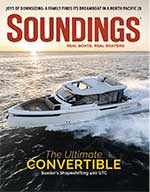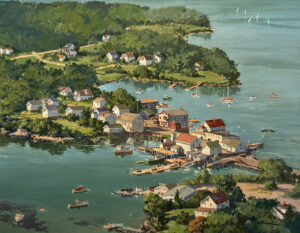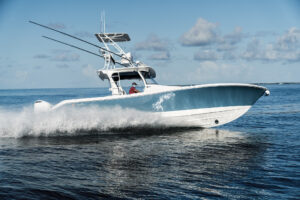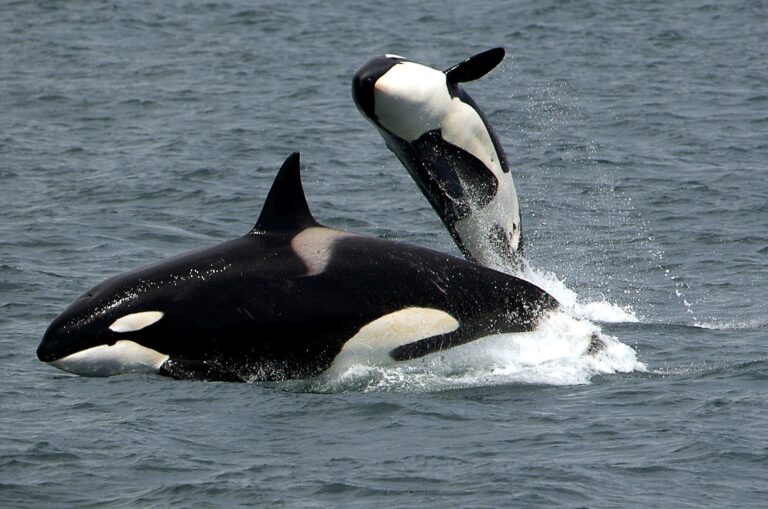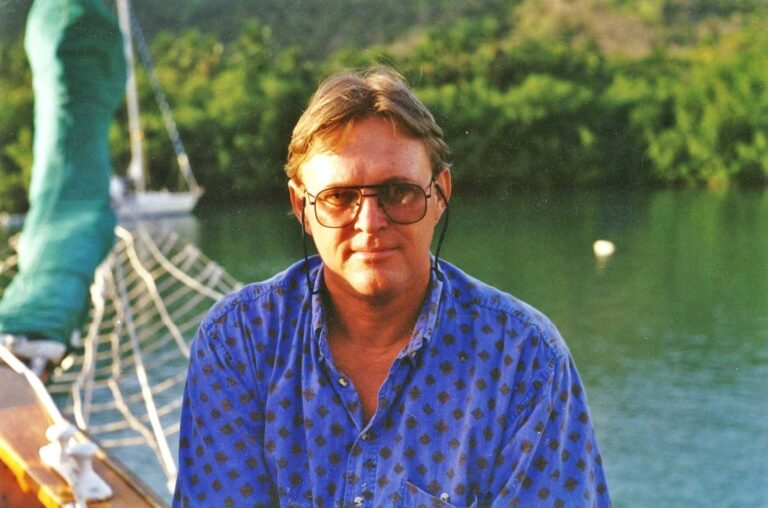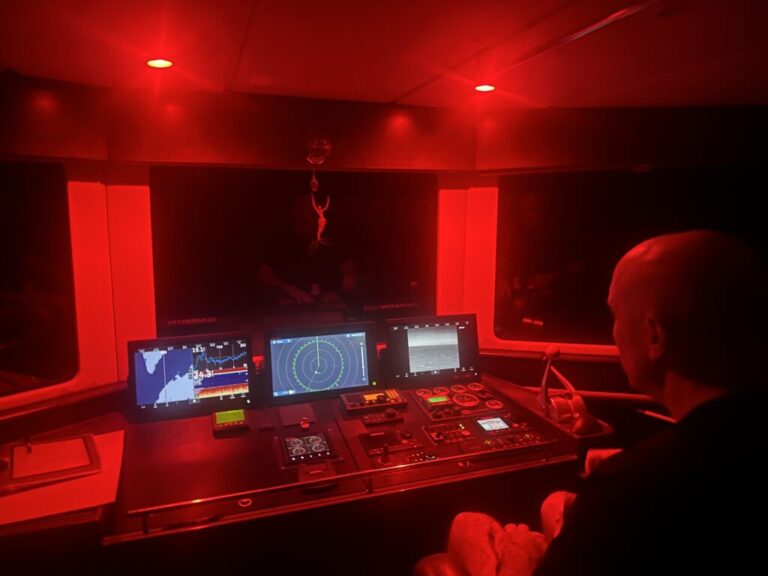
Two recently published studies in the journal Nature make it seem that the 2004 film “The Day After Tomorrow” was, in fact, more science than fiction.
You remember the premise: Researcher Dennis Quaid’s son, played by Jake Gyllenhaal, is trapped in Manhattan when the North Atlantic current goes haywire and everything north of Mexico ends up in an eco-apocalypse. Snow blankets skyscrapers. A tsunami floods New York City. People who step outside freeze to death. “When this storm is over,” Quaid’s character says, “we’ll be in a new Ice Age.”
Today’s real-life researchers aren’t being quite so melodramatic, of course, but the studies published in April say a similar ocean phenomenon is now well underway — and is already causing “species shift” in fisheries, rising sea levels along the U.S. East Coast and more.
The studies, by two sets of researchers, are about Atlantic meridional overturning circulation, or AMOC. It is a system of currents in the Atlantic Ocean. The flow of those currents hasn’t gone completely out of whack, like the ocean current did in the movie, but AMOC has slowed, the research shows, to a record 1,000-year low.
AMOC’s slowdown, or weakening, is significant for numerous reasons — not the least of which is that AMOC is the conveyor belt of the ocean. It carries warm water from the equator up to the northern Atlantic, and then brings colder, northern water back down south, affecting everything from the climate in Western Europe to the water temperatures off the U.S. East Coast.
The colder water from the north usually moves along the AMOC conveyor belt to the south at deeper ocean levels, because cold, salty water is dense. It sinks. But because melting ice in the Arctic and Greenland is adding fresh water to the watery mix up north, more of the colder water is remaining at the ocean’s surface and, it seems, jamming up the AMOC conveyor belt.
Both sets of researchers found AMOC’s weakening to be real, using two methods of study. One team used an expensive, high-resolution mapping tool to look more clearly at the ocean than researchers generally are able to see.
“It’s the ultra-4K TV of models,” says Vincent Saba of the National Oceanic and Atmospheric Administration’s Marine Fisheries
Service, and a co-author of one of the studies. “There’s very high detail of the whole East Coast. We were really able to look at detailed changes in the Gulf Stream and the Labrador Current as they relate to AMOC.”
The research team that produced the other study looked at sediment samples off North Carolina, to see how thick the deposits of sand grains were over the years. Their theory was that a stronger AMOC in decades or centuries past would have been able to carry and deposit thicker grains.
“We were looking at the last 160 or 170 years,” Saba says of the high-resolution team. “They were looking at more of a 1,500-year record.”
Saba’s team showed a weakening AMOC during the time since about the Industrial Revolution in the 18th and 19th centuries, suggesting that manmade climate change is a cause of the slowdown. The team that looked at sand grains, he says, showed a weakening AMOC from natural causes starting during the 14th to 19th centuries, a period that scientists call the Little Ice Age.
Taken together, the studies suggest that human-driven climate change is intensifying what started hundreds of years ago as a natural AMOC-slowing phenomenon.
“If their results are correct and our results are correct,” Saba says, “then ours suggest an AMOC weakening in the already-weakened state caused by that Little Ice Age.”
Both teams had to use indirect measurements, he says, because more direct ones are harder to come by.

“The problem with AMOC is that we only have about 14 years of direct measurements of only one component of AMOC,” Saba says. “It isn’t long enough to have enough observation to suggest trends, so we have to rely on these proxies.”
Saba says that, unlike in “The Day After Tomorrow” film, none of us has to make an emergency mass migration to warmer latitudes just yet — but we do have to realize that everything from East Coast sea levels to fish habitats are already changing, and are projected to change more, as AMOC continues to weaken.
There is consensus, he says, among 25 to 30 prediction models that are run globally about every half-dozen years, that AMOC will keep weakening, especially with continued industrial emissions related to climate change and freshwater ice melt. Scientists disagree on the future amount of AMOC weakening, he says, but there is additional evidence to support the consensus about AMOC’s effects right now.
For instance, AMOC’s impact on East Coast fisheries is already being seen from about Cape Hatteras, North Carolina, up through the Gulf of Maine, he says.
Research shows that as AMOC weakens, the presence of warmer, salty water shifts to the northwest. To understand the phenomenon, think about a rushing river. Its water is moving so fast that the whole of the river stays in a narrow lane, compared to a lazy, meandering river, which has time to settle in and broaden out. Basically, as AMOC slows, the warm water moving up from the Gulf Stream spreads, and research shows that the direction of the warm-water spreading is to the northwest.
Saba says there’s direct research of this phenomenon from the past decade in the Gulf of Maine, as an example. That gulf generally gets its water from one of two sources: the cold Labrador Current waters flowing down from its north, and the warm Gulf Stream waters coming up from its south.
“We know, for the past 10 years or so, the majority of water coming into the Gulf of Maine is from the Gulf Stream,” he says. “It’s pretty substantial. If you look at the last 10 years, the waters in the Gulf of Maine have warmed faster than 99 percent of the global ocean.”
And warmer waters affect the types of animals that can thrive in them.
For instance, Saba says, cold-water species are dwindling in the Gulf of Maine, while lobsters seem to be moving offshore to colder water now.
The lobsters are an interesting case study; they also used to be happy in more mid-Atlantic climes, such as off the coast of New York.
“If you look at Long Island Sound, the lobster population crashed and hasn’t recovered since 1999, whereas in the Gulf of Maine, they’re thriving — but we don’t think that’s sustainable because of what’s happening with the water,” Saba says. “My sense is that what’s happening is a bad thing for lobsters. They’re moving offshore. Cold-water species like cod, there are very few left off the Gulf of Maine. Near New Jersey, we’re seeing species like winter flounder moving north. If you have a colder-water species and the water is warming, they either have to go to deeper water or they have to move north, where the water is colder.”
Saba cautions that species behavior is based on a lot more than just water temperature. Fish, lobsters and all kinds of sea dwellers have to find food and places to spawn. They have to avoid predators. Fisheries experts have trouble predicting the next year’s stock, let alone what’s going to happen 25 or 50 years into the future.
However, he adds, what’s happening with AMOC indicates that the environments available to various species are changing, and will continue to change, temperature-wise.
“If we only assume ocean temperature will affect fish, what do those models look like?” he says. “Summer flounder, a warmer-weather fish, you’re going to see more habitat available 50 years from now.”
And where the fish and shellfish go, boaters tend to want to follow.
“Recreational fishermen, they like to go to a certain watering hole where they always catch sea bass or summer flounder,” Saba says. “Twenty-five years from now, they may find that they can’t go to those same holes because the water is warming. They may have to go 25 or 30 miles north to catch those fish, and all they can find at the old place is something they don’t want, like a slimy dogfish. There are going to be winners and losers.”
Changing fishing grounds are expected to affect everything from the amount that boaters have to spend on fuel to reach the new habitats, as well as fees in places where anglers must catch certain species only within the territorial waters of the state that issued their fishing licenses. For boaters who want to fish for specific varieties, paying for fishing licenses in multiple states may become the norm.
“That’s going to affect commercial and recreational fishing,” Saba says. “We have no doubt about that. We’re seeing those changes today.”

Researchers also expect boaters who don’t fish to see continuing effects from AMOC’s weakening, primarily in terms of rising sea levels along the whole of the Eastern Seaboard.
In 2009, researchers looked at the rate of sea level rise from Florida up to Maine and beyond into Canada, Saba says. That year was significant, because it’s also the year that researchers found the weakest-ever AMOC measurements from a point where readings are regularly taken.
“During that year,” he says, “sea-level rise across the whole Eastern Seaboard was unusually high.”
The 2009 link between a weaker AMOC and rising sea levels could be a coincidence, but a 2010 research paper posited that there may be a correlation — a theory that Saba thinks is correct.
“It makes sense,” he says. “If the Gulf Stream is weaker, you get a buildup of water along the U.S. to the west of the Gulf Stream. The water remains there until AMOC recovers, and then sea level goes back to average again. It’s like a seesaw.”
More research is needed to show a correlation between AMOC’s weakening and rising Eastern Seaboard sea levels, he says, adding that such research could produce results even more harrowing than existing predictions for coastal marinas and communities in the lowest-lying areas.
“If there is that relationship, and if AMOC continues to weaken like we’re predicting, then that could mean even higher sea level rise than what we’re predicting in the models,” Saba says.
Researchers, in general, can’t predict whether Miami or Manhattan will see the greatest sea-level rise over time. Globally, the oceans aren’t all expected to rise in an equal manner. Coastal communities in India may get hit harder than those in Africa. The same is true for towns up and down the East Coast of the United States.
But there will be an impact, Saba says, especially from about North Carolina
to Maine.
“We don’t see these enhanced warming signals south of Cape Hatteras,” he says. “The sea level rise would affect the entire East Coast, but in terms of the warming temperatures, we think the most dramatic changes in terms of ecosystem change may be between North Carolina and the Gulf of Maine — and that may have a lot to do with what AMOC is doing now, and what it might be doing in
the future.”
This article originally appeared in the August 2018 issue.

